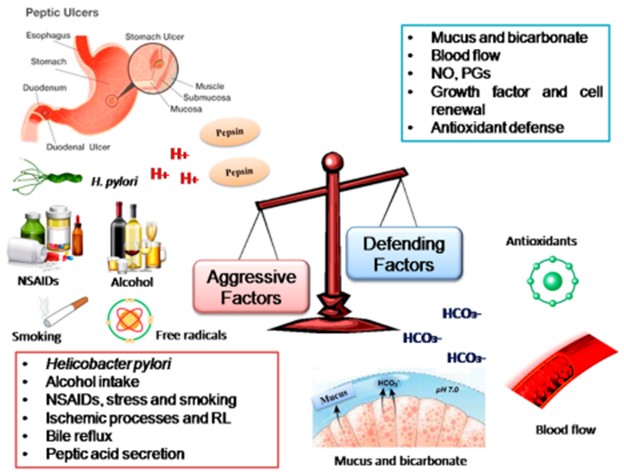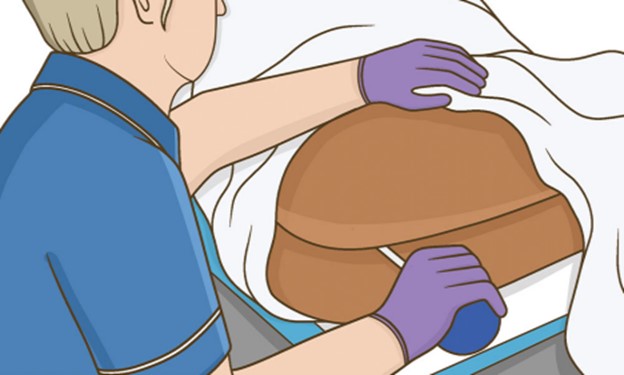A nurse is reviewing the medical record of a client who has a peptic ulcer. Which of the following findings should the nurse identify as a risk factor for this condition?
History of bulimia
Consumes spicy foods 5 to 8 times weekly
History of ibuprofen use
Drinks green tea
The Correct Answer is C
Ibuprofen is a nonsteroidal anti-inflammatory drug (NSAID) that can increase the risk of developing peptic ulcers. It can cause irritation and damage to the lining of the stomach and small intestine, leading to the formation of ulcers.

The other options may not directly contribute to the development of peptic ulcers:
History of bulimia: While repeated vomiting can irritate the esophagus, it is less likely to directly cause peptic ulcers.
Consuming spicy foods 5 to 8 times weekly: Spicy foods can exacerbate the symptoms of existing peptic ulcers, but they are not considered a direct risk factor for their development.
Drinking green tea: Green tea is generally considered to have health benefits and is not known to be a risk factor for peptic ulcers.
Nursing Test Bank
Naxlex Comprehensive Predictor Exams
Related Questions
Correct Answer is A,B,C,D,E
Explanation
When removing personal protective equipment (PPE) after caring for a client in contact isolation, the nurse should follow the steps in the following order:
1. Remove gloves.
2. Remove protective eyewear.
3. Remove gown.
4. Remove mask.
5. Perform hand hygiene.
By following this sequence, the nurse ensures that the removal of PPE is done in a way that minimizes the risk of contamination. Removing gloves first helps prevent the spread of potential contaminants on the hands. Removing protective eyewear next avoids any potential contact with the face or eyes during the removal process. Removing the gown comes next, followed by the mask. Lastly, performing hand hygiene after removing all PPE helps ensure the hands are thoroughly cleaned.

Correct Answer is B,A,C,D
Explanation
The correct sequence of steps the nurse should take to administer the enema is:
1. Provide for the client's privacy by closing the curtains.
2. Confirm the client's identity by checking her wristband.
3. Assist the client into the Sims position.
4. Insert the tip of the enema tubing into the client's rectum.
Proper infection control measures, preparing the enema solution, monitoring the flow rate, and documenting the procedure are among other important considerations that should be taken into account.

Whether you are a student looking to ace your exams or a practicing nurse seeking to enhance your expertise , our nursing education contents will empower you with the confidence and competence to make a difference in the lives of patients and become a respected leader in the healthcare field.
Visit Naxlex, invest in your future and unlock endless possibilities with our unparalleled nursing education contents today
Report Wrong Answer on the Current Question
Do you disagree with the answer? If yes, what is your expected answer? Explain.
Kindly be descriptive with the issue you are facing.
